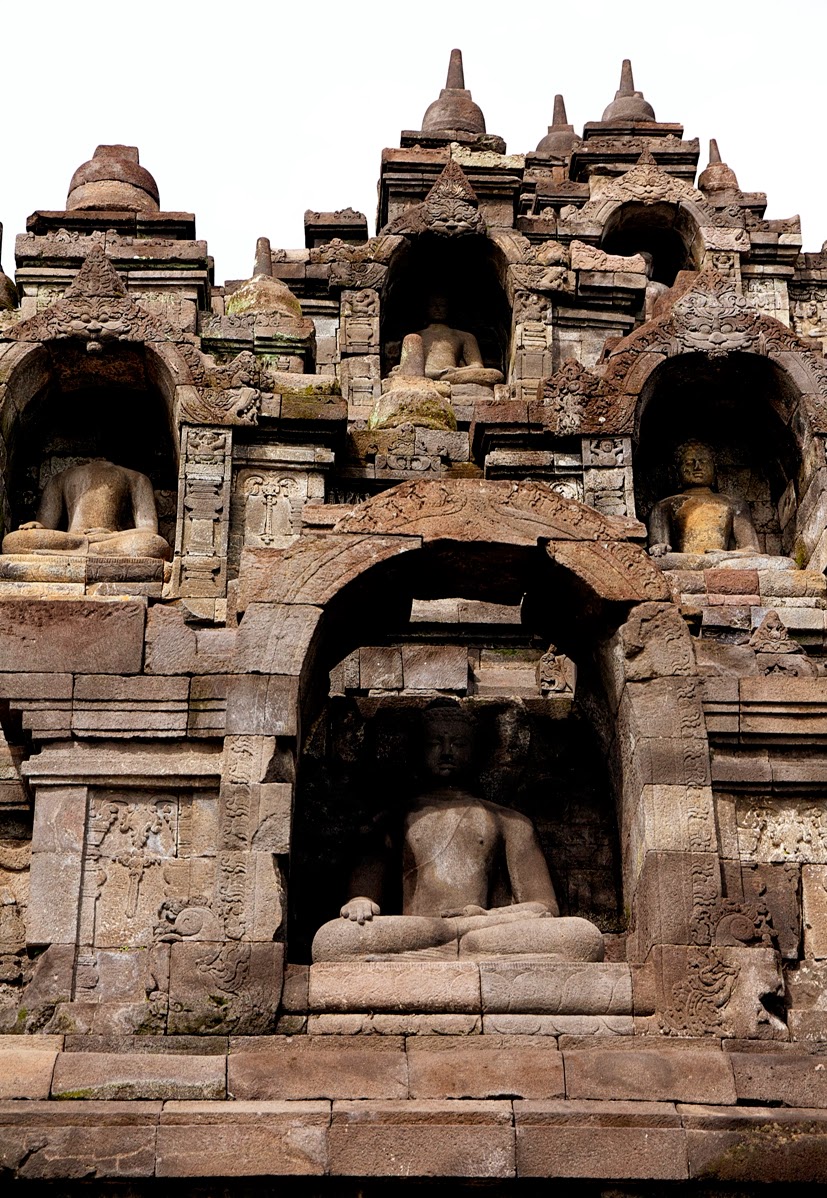 |
| Jojgakarta, one of the downtown residential areas |
The official name of Yogyakarta is less popular than Jogjakarta or Jogja. It is one of the major tourist destinations in Indonesia and the capital city of the province is in the south of Central Java province.
 |
| Tugu Jogja or Tugu Golong-Gilig |
Tugu Jogja is the most popular landmark of Jogja. This three centuries old monument is located right in the center of the crossroad of four major roads. It keeps significant history records of Jogja. The tugu was built around one year after the construction of Yogyakarta Kingdom. At the early time of its construction, it clearly described the philosophy of the unity of God's creatures that means the spirit of togetherness of commoners and authorities to fight colonials. This monument was also known as Tugu Golong-Gilig or Tugu "spirit of togetherness".
 |
| The mount Merapi, an active volcano |
Jogja lies in the ring of fire and has thus repeatedly been struck by earthquakes and volcano eruptions. In November 2010, the nearby volcano of Mount Merapi erupted, spewing lava over nearby villages and killing 353 people. It was postulated that it'll be another 2-3 years until the next small eruption and 10-15 years until the next kababoommmm, so plan your visit carefully.
 |
| The jeeps for touring the affected areas of Merapi eruption |
 |
| Mount Merapi covered by thick cloud and the hard lava flow from the peak |
There are several candi located in Jogja and it's proximity. The two most famous ancient temples are both UNESCO World Heritage Sites. These include Borobudur, an 9th century Buddhist temple located 1 hour drive from Jogja in Magelang and a Hindu temple, Prambanan is located just 10 minutes drive from Adi Sucipto airport. Candi Borobudur, one of the famous ancient Buddhist's temples. It was constructed from hundreds of volcanic or river stone blocks and assembled solely by human labor. The monument consists of six square platforms topped by three circular platforms, and is decorated with 2,672 stone carving religious related story panels and 504 statues. A main dome, located at the center of the top platform, is surrounded by 72 statues seated inside a perforated stupa.
 |
| The building blocks of the Candi Borobudur made from volcanic and river stones |
 |
| Panel depicting religious myth or story |
 |
| The statue and the perforated stupa |
 |
| The breaking neck steps of Candi Borobudur |
Malioboro is a well-known two km shopping promenade and very popular among Indonesian as well as international tourists. Spans from the Tugu Station to the Sultan's square and home to hundreds of shops and street-stalls offering various kind of handicrafts.
Must try in Jogja, the salak fruits and es teler. Salak or snake fruit is a species of palm tree native to Indonesia, Brunei and Malaysia. It is a very short-stemmed palm, with leaves up to 6 metres long. The fruits grow in clusters at the base of the palm. They are about the size and shape of a ripe fig, with a distinct tip. The pulp is edible. The fruit inside consists of three lobes with the two larger ones, or even all three, containing a large inedible seed. The taste Jogja salak or salak pondoh is usually sweet and acidic, but its apple-like texture very dry and crumbly. Es teler is a fruit cocktail with shaved ice. The usual ingredienf include avocado pieces, young coconut, grass jelly, jackfruit and tapioca pearls and served with coconut milk, sweetened condensed milk, pandan flavoured palm sugar, a tiny amount of salt and coarsely shaved ice.
 |
| The local salak or salak pondoh and the honey salak (at background) |
 |
| Es teler soothing the mid-day heat |




















Comments
Post a Comment